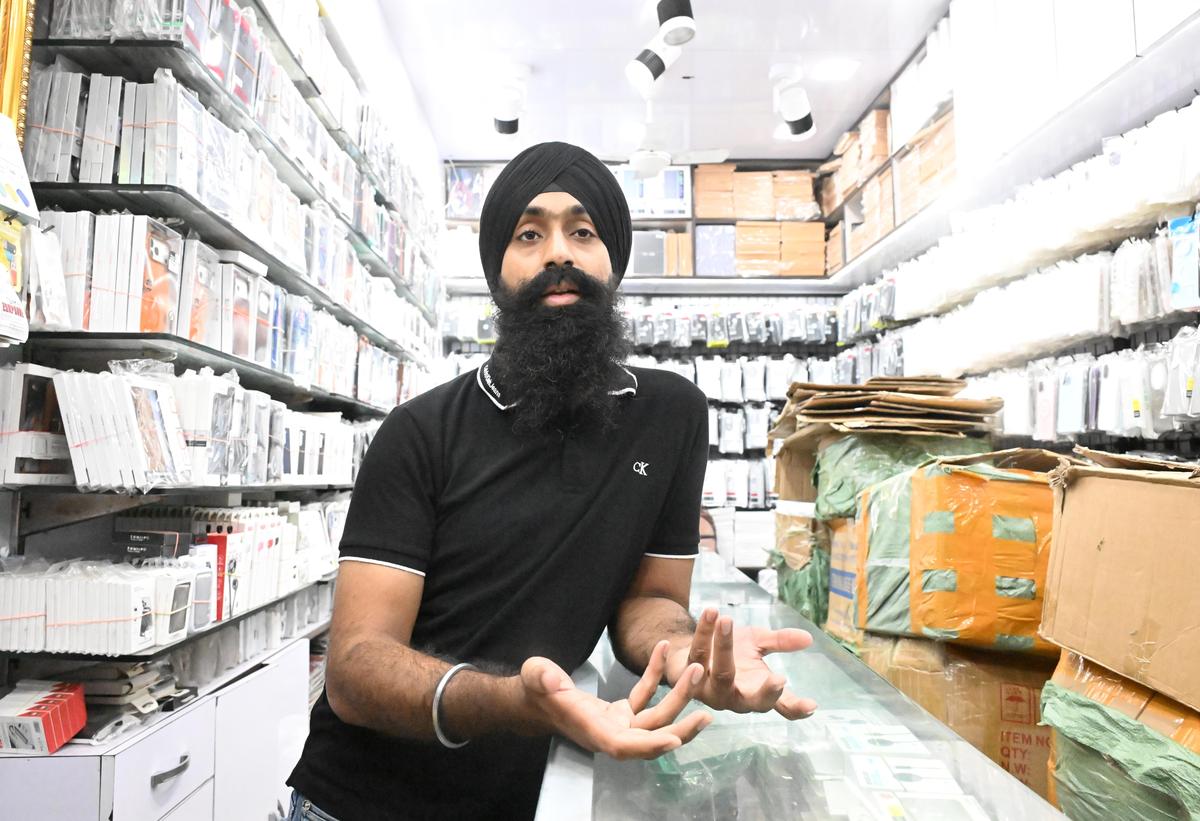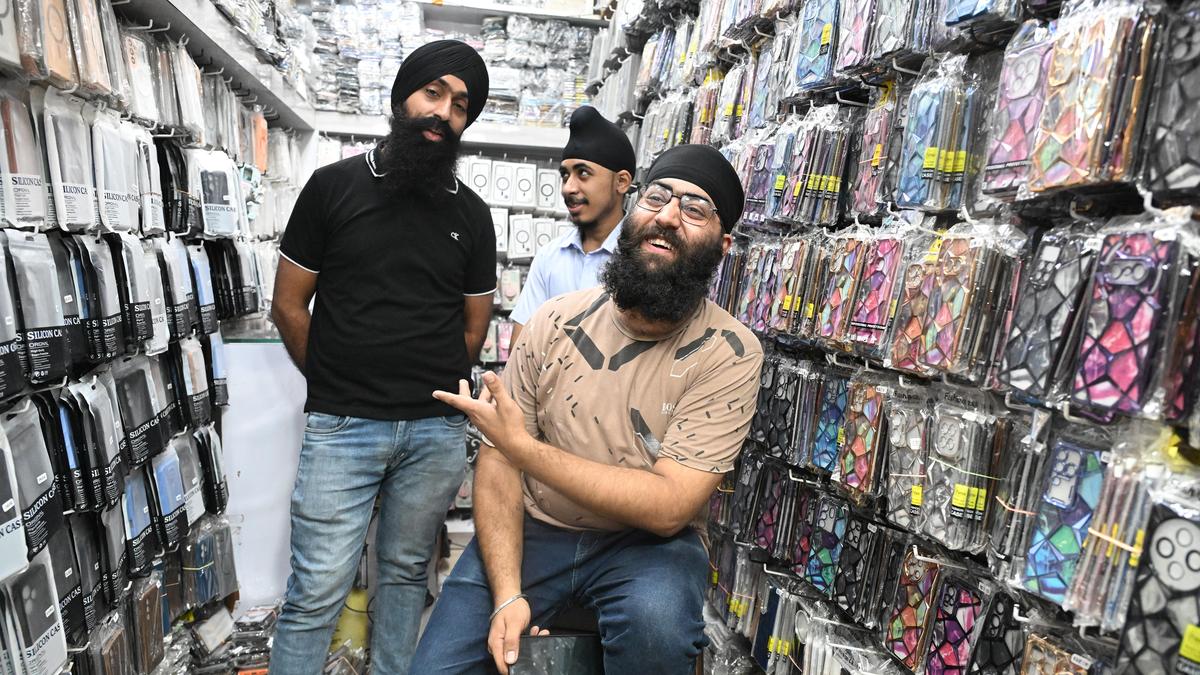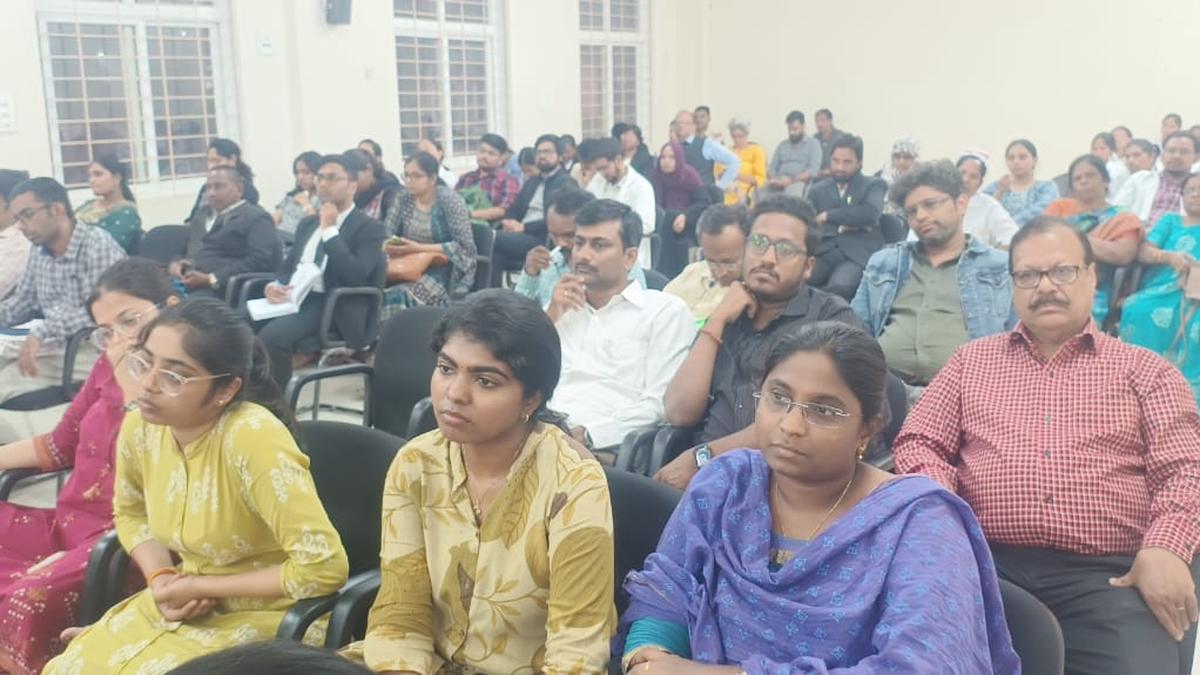More than two decades after he arrived in Delhi from Afghanistan, Taranjit Singh became an Indian citizen this year. He was just two years old when he entered the country from Kabul. Taranjit, whose existence and livelihood depended on a stay visa or a long-term visa (LTV) renewed annually, is relieved now as he will no longer have to visit the Foreigners Regional Registration Office at R.K Puram in south Delhi, around 18 km from his residence in west Delhi’s Vikaspuri, to get the document extended.
“The stay visa is valid for one year but it took six months for the document to be processed. Now that I have Indian citizenship, I can live in peace,” Taranjit says as he opens the shutters of his rented shop in the basement of a shopping plaza in Karol Bagh, where he sells mobile phone covers.
The shop, which is owned by a relative, helped his family find footing in Delhi after his father relocated to India in 1998, Taranjit says, adding that he has been running the shop for the past 10 years. For him, Kabul seems like a distant dream. “I have no memory of Afghanistan, but at home my family still speaks in the Kabuli dialect mixed with Farsi. It is different from Punjabi and Hindi,” he says.
Becoming Indians
Taranjit applied for Indian nationality under the Citizenship Act, 1955 around three years ago and received the naturalisation certificate earlier this year. His friend, Jagmeet Singh, 28, who also sells mobile covers in the same complex, also became an Indian citizen this year, but under the Citizenship (Amendment) Act (CAA), 2019. The friends buy the goods from China and sell them in India.
Days before the 2024 Lok Sabha election, the CAA Rules were notified on March 11, 2024, following which the Act to give citizenship to undocumented members of Hindu, Sikh, Parsi, Jain, Buddhist, and Christian communities from Pakistan, Afghanistan and Bangladesh became operational.
Under the 1955 Act, an applicant has to stay continuously in India for 11 years to qualify for citizenship. Under the CAA, members of undocumented non-Muslim communities from Afghanistan, Bangladesh and Pakistan – who entered India on or before December 31, 2014 – could apply for citizenship and the requirement of continuous stay of 11 years was reduced to 5 years.
Though the CAA is for undocumented migrants to obtain citizenship, the government’s online portal asks applicants to provide any six types of documents and specify their “date of entry” in India. The applicants are also asked for an “eligibility certificate” issued by a “locally reputed community institution” confirming that he/she belongs to the “Hindu/Sikh/Buddhist/Jain/ Parsi/Christian community and continues to be a member of the above mentioned community”.
Applicants from the six non-Muslim communities would have been eligible under the Citizenship Act, 1955, too, after living in India continuously for 11 years.
After Sikhs were attacked in Afghanistan in multiple incidents of explosions and shootings, the Ministry of Home Affairs (MHA) expedited citizenship applications under the 1955 Act.
In 2009, the Congress-led United Progressive Alliance government had significantly eased LTV norms for Hindus and Sikhs from Pakistan and Afghanistan, enabling them to apply for citizenship under the 1955 Act as many of them lost their passports or the document expired in transit. LTVs are a precursor to citizenship.
According to Guljeet Singh, president of the Gurdwara Guru Nanak Sahib Ji in Manohar Nagar, Delhi, whose family was among the first to migrate to India in 1971, there are currently around 5,000 Sikhs and Hindus of Afghan origin in India.
“The migration started way back in 1971. Some people came in 1987 and the majority entered India after 1992. Things stabilised in Afghanistan, but in the past four-five years, the remaining 2,000 Sikhs also migrated to India. Now, around 25 Sikhs remain in Afghanistan to take care of our gurdwaras. There are just two Hindu families left. We have applied for visas for them to come to India,” he says.
Guljeet says in the past year, about 1,000 Sikh residents of Afghan origin became Indians under the CAA and the applications of about 700 others from the community are pending.
After the Taliban came back to power in Afghanistan in 2021, the last of the remaining Sikhs also moved to India.
A delegation of Hindus and Sikhs from Afghanistan, which sought refuge in India to escape religious persecution over different periods of time, met Taliban Foreign Minister Amir Khan Muttaqi at the Afghanistan Embassy in India on October 13.
Reconnecting with the homeland
On October 21, India restored formal diplomatic links with Afghanistan by upgrading the Technical Mission in Kabul to an embassy with “immediate effect”. India is yet to recognise the ‘Islamic Emirate of Afghanistan’, the name given by the Taliban after it took over the regime in 2021.
Recalling the meeting with the Minister, Guljeet says, “He offered us an opportunity to return to Afghanistan but we wanted an assurance about the safety of our community. We also said minorities should get representation in the Loya Jirga (grand council), but that is a long way away. The priority right now is to restore the religious places that have been destroyed over the years. The Minister said a budget has been allocated to restore gurdwaras and temples.”
A delegation of members of the Afghan Sikh and the Hindu community meets Taliban Foreign Minister Amir Khan Muttaqi in New Delhi on October 13. Photo: SPECIAL ARRANGEMENT
He says all 276 Sikhs – who were evacuated by India on an emergency visa after the Taliban takeover in August 2021 – migrated to Canada after arriving in India. “Since Canada was offering asylum to people from Afghanistan and they had sponsors there, they all moved there after being evacuated by the Indian government,” he says.
Puneet Singh Chandhoke, president of the India World Forum, which assists the Afghan community in India, says the delegation informed Muttaqi about the history of Hindus and Sikhs in Afghanistan and their current demography.
“The members requested the Minister to facilitate the visit of a joint delegation of prominent Hindus and Sikhs leaders from India to Afghanistan for the restoration and maintenance of historical gurdwaras and mandirs located there. They also requested that minorities be similarly represented in the Afghan government as it was during the previous regime – two persons each from the Hindu and the Sikh community be appointed in high ranking positions of the government,” Chandhoke says.
Memories and grievances
Although he has no memories of Afghanistan, Taranjit says he would not like to go back to his home country as he finds India safe. He says he is aware about the Taliban Foreign Minister’s visit but has “no expectations”.
His grandparents, who chose to stay back, were among 27 worshippers who were killed at a gurdwara in Kabul on March 25, 2020 when a man in a police uniform entered the premises and fired indiscriminately. The Islamic State in Khorasan Province, a banned terror group, claimed responsibility for the attack. The suspect was later identified by the National Investigation Agency (NIA) as Muhammed Muhsin, a 29-year-old man from Kasaragod in Kerala.
This was the first instance when NIA registered a case for a terror attack committed outside the country as there was an Indian among the 27 people killed. “Six years ago, my grandparents, Avtar Singh and Jai Kaur, came to Delhi to attend my wedding. We did not know that on their return they would meet such a cruel fate. They were shot dead in cold blood. Who would want to go back now?” says Taranjit, adding that he has no friends or acquaintances left in Kabul. He married a Sikh woman of Afghan origin and the couple has a two-year-old son.

Taranjit, who finds India safe, does not wish to return to Afghanistan. In 2020, his grandparents were among 27 people killed when a gurdwara in Kabul was attacked by a member of a terror group.
| Photo Credit:
SUSHIL KUMAR VERMA
He says the gurdwaras in Afghanistan need urgent attention. “Most gurdwaras are empty. There is no prayer held there. The Muslim community cleans the premises every now and then. If the Taliban regime could ensure the safety of sevadars (caretakers), then some of us could go there occasionally,” he says.
To give back to the community that helped him and his family here, Taranjit also volunteers at the Manohar Nagar gurdwara as a secretary. “I help them organise events, keep a record of papers, and do seva (community service). The Sikh community stood behind us and this is our way of giving back to society,” Taranjit says.
Guljeet says the Taliban and the Sikh community should have a mutually beneficial relationship. “The Taliban need the Sikh community for business and expanding trade with other countries. But every other person there carries a gun. We do not know if they are the Taliban or a militant group member. What if the traders are abducted? Who will ensure their safety? It is too early to say that the Sikhs will return,” he says.
He adds that women are particularly vulnerable. “They do not give equal status to women. The Taliban do not consider women as deserving of freedom and equality. It is a difficult place; more so for women,” he says.
Jagmeet says there is freedom in India. “We can practise our faith; we can breathe freely here,” he says. “When I received the e-mail that my citizenship under the CAA has been processed, I was thrilled. We went to the Census office in south Delhi to collect the document. It was a different feeling when I held the certificate in my hand. I took a selfie and posted it as my WhatsApp status,” he says.
He adds that the first thing he did after securing citizenship was to apply for an Indian passport. “I want to visit Dubai for a holiday. I want to explore other countries,” he says.
As the CAA was opposed by many States, including West Bengal, Tamil Nadu and Kerala, the MHA notified committees, headed by Census and Postal Department officials, leaving no scope for the involvement of State governments.
Jagmeet is helped at his shop by Jasmeet Singh, 18, who was born in India but is yet to get citizenship. “My parents came from Afghanistan and I was born here. I studied till Class 10 and now work at the mobile shop to support my family,” says Jasmeet as he waits for his CAA application to be processed.
In India, citizenship can be acquired by birth, descent, registration, and naturalisation. The 1955 Act granted citizenship by birth to any person born in India after January 26, 1950. The Act was amended in 1986, 2003, and 2019. The 1986 amendment stated that those born in the country would be considered Indian if at least one of the parents was Indian. The 2003 amendment stated that for those born between 1987 and 2003, both parents should be Indians and in case of one parent being Indian, the other should not be an illegal migrant.
Edited by Ritaja Roy


